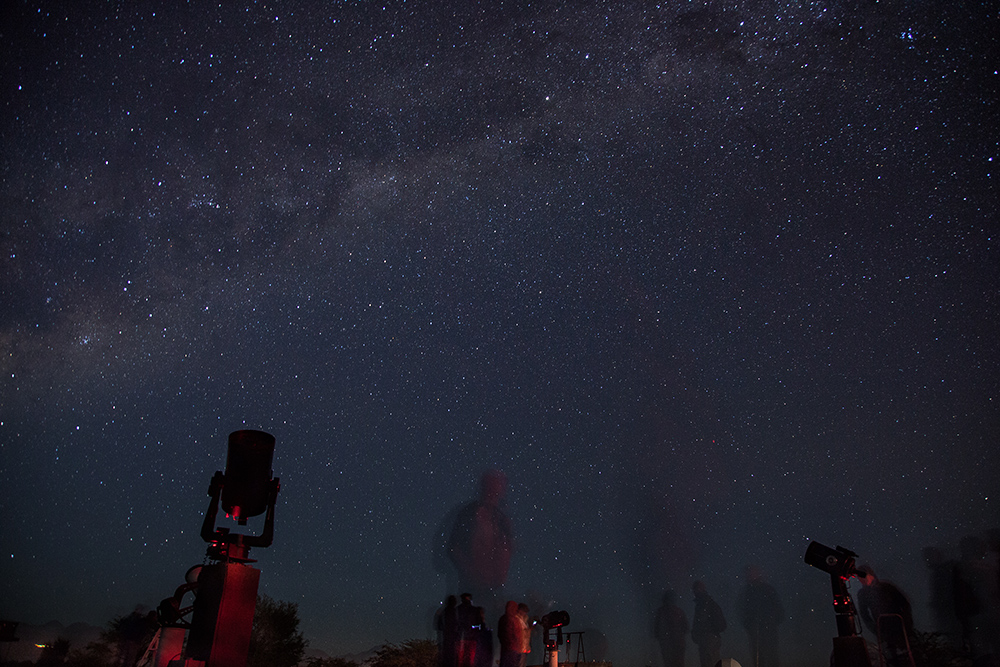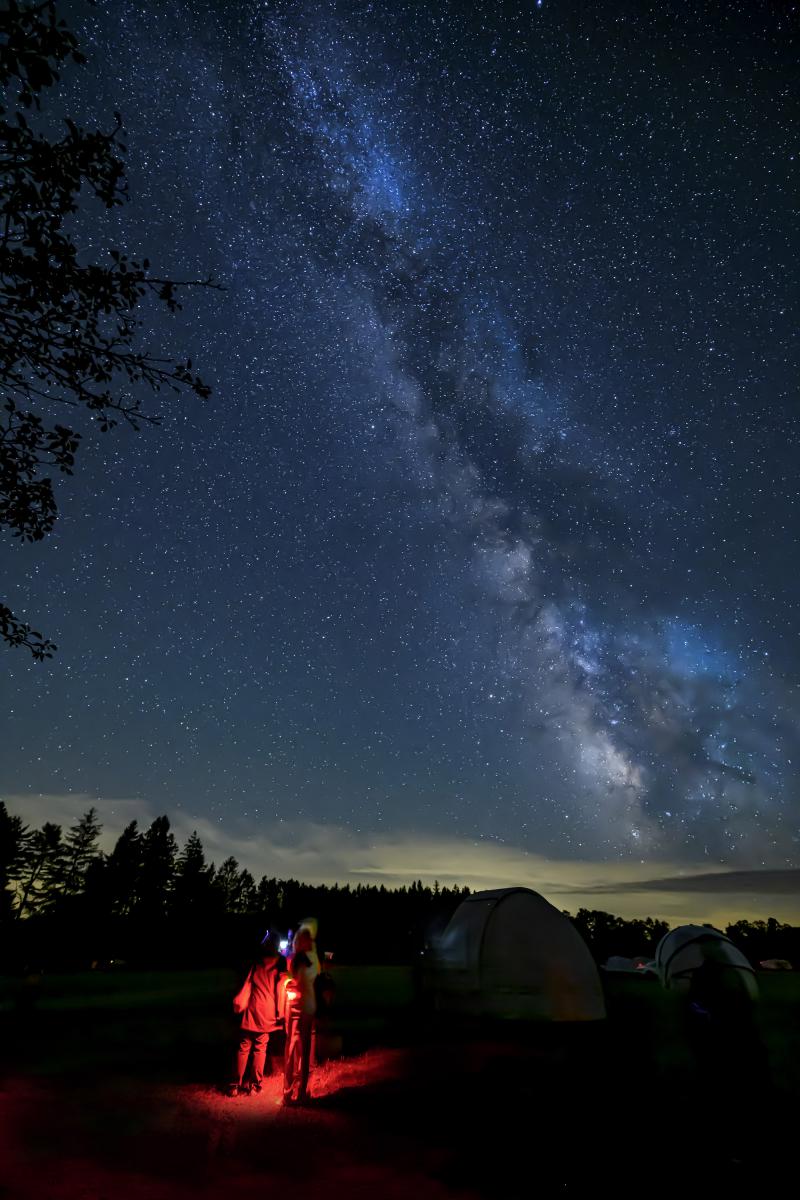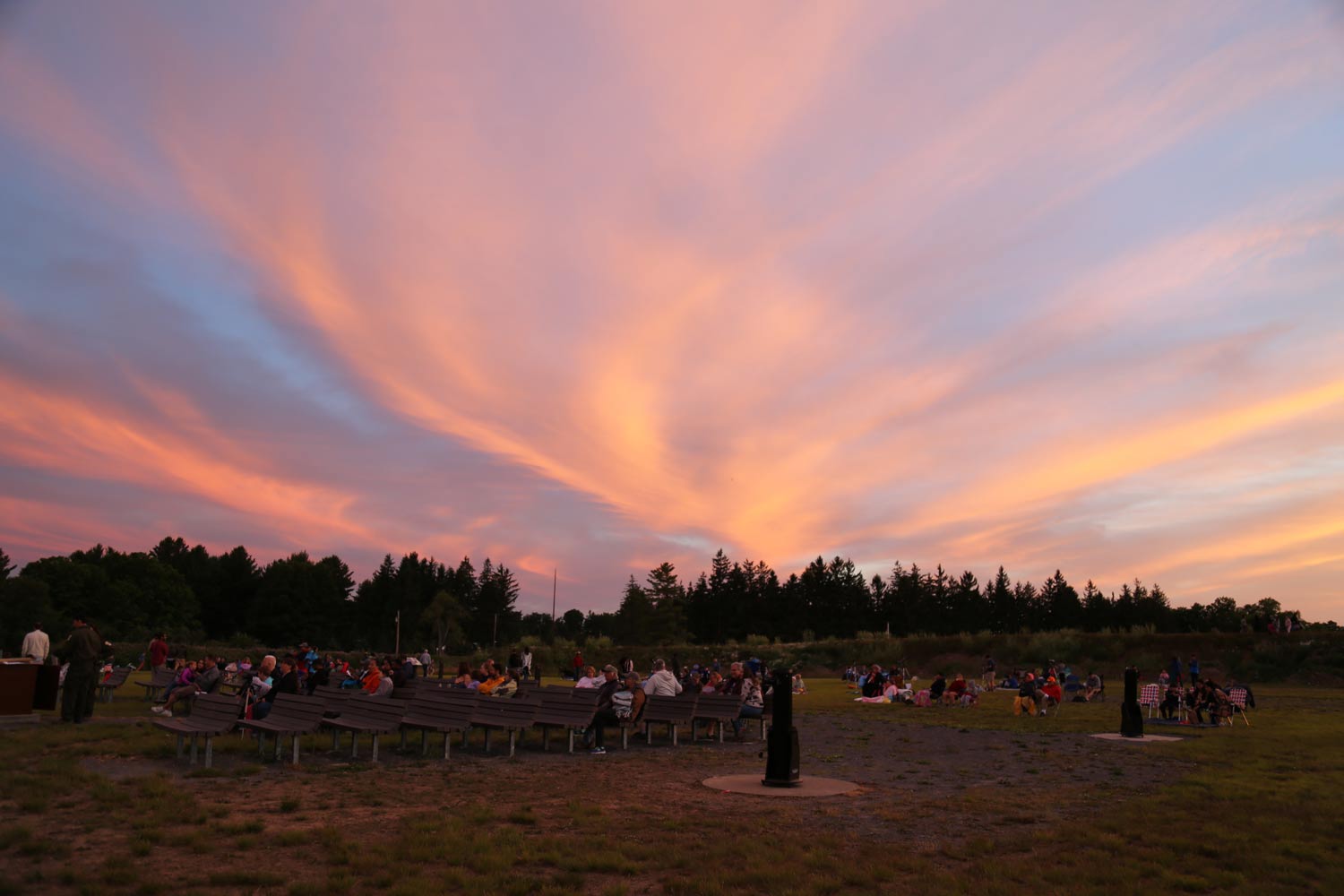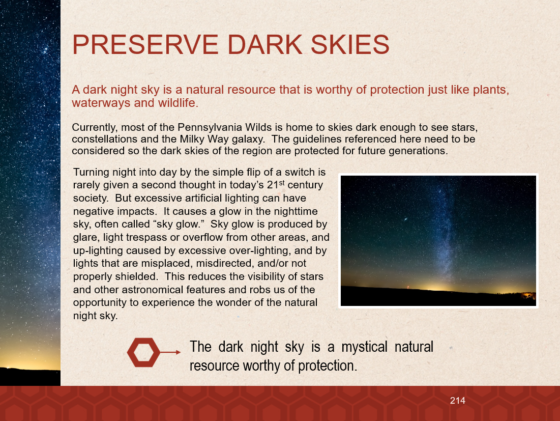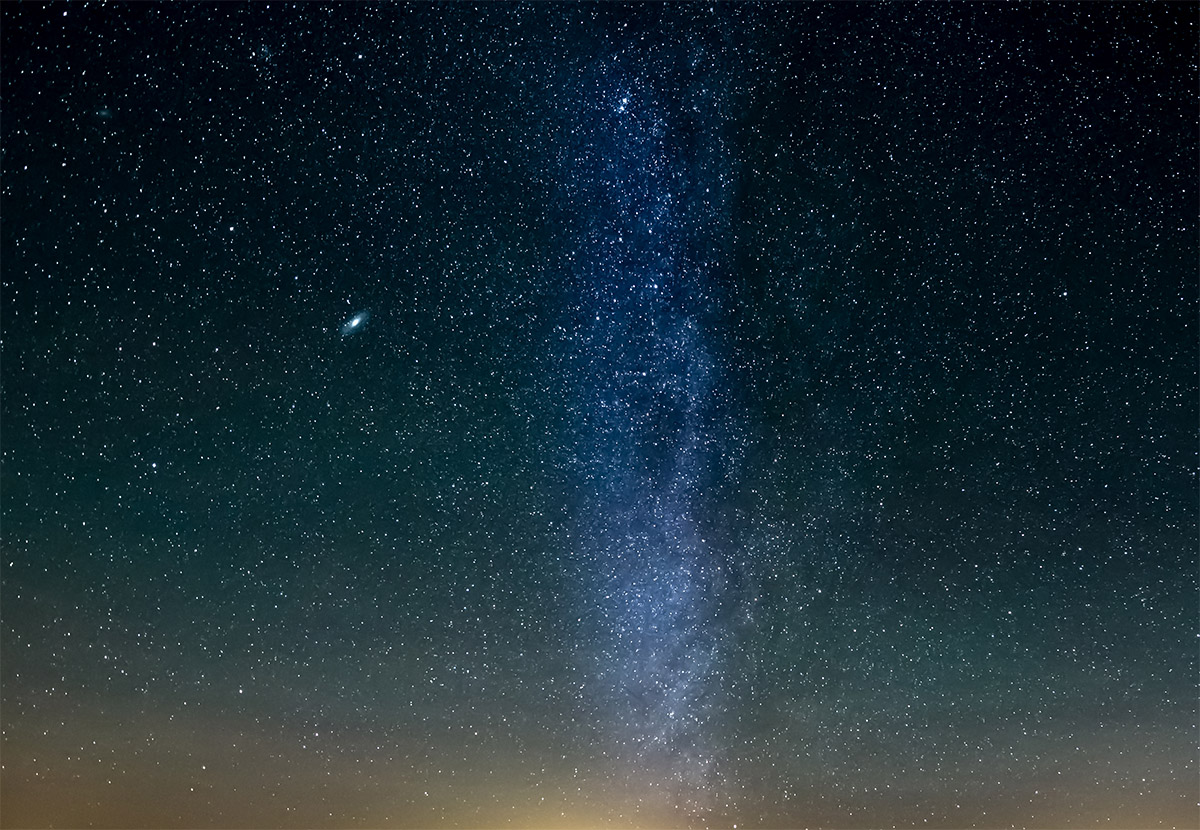International Dark Sky Week is held during the week of the new moon in April (April 15-22, 2023), when people worldwide observe the beauty of the night sky without light pollution… and there’s truly no better place to celebrate than the Pennsylvania Wilds.
A dark night sky is a mystical natural resource that is worthy of protection just like plants, waterways and wildlife.
In fact, we think that our dark skies in the PA Wilds are so important that we even named one of our five PA Wilds landscapes after it: Dark Skies.
The PA Wilds uses these landscape names to help travelers find the experiences they crave the most. In the Dark Skies landscape (which includes Potter, Tioga, Cameron and parts of Clinton County), professional astronomers and novice stargazers alike can enjoy the beauty of our perfect velvet sky.
Inspiring awe and delight, Dark Skies is home to the world’s second certified International Dark Sky Park: Cherry Springs State Park.
Named The Most Beautiful Spot in Every U.S. State for Pennsylvania by MSN Travel in 2017: “Cherry Springs is possibly the best spot for stargazing in all of the U.S. On a given night, 10,000 stars are visible to the naked eye.” See the stars like you’ve never seen them before, with an unforgettable visit to Cherry Springs State Park! Honored with the 2017 PA Wild’s “Great Places Award,” the park’s incredible, awe-inspiring dark skies attract a high volume of astronomers and stargazers for views of the Milky Way, planets, and hard-to-see astronomical objects and phenomena.
Video produced by Visit Potter-Tioga and the Pennsylvania Department of Conservation and Natural Resources.
Although Cherry Springs is the world’s second certified International Dark Sky Park and the only official Dark Sky Park in Pennsylvania, there are other places where you can see the stars especially well. Use the www.lightpollutionmap.info website and map to find the light pollution estimate of many locations throughout the United States. You’ll find that the Pennsylvania Wilds has many areas that are better shielded from light pollution, making it easier to spot the wonders of the cosmos.
Why do our dark skies attract such attention? Although residents might take these beautiful naturally dark nights for granted, visitors often admire how well protected these areas are. Seeing the wonders of the night sky is often not possible in more urbanized places where light sources prevent stargazing and other astronomy activities.
Because these dark skies attract tourism, protecting our nighttime skies means protecting part of our economy.
Minimizing the amount of skyglow (the official term for the effects of artificial lighting on our ability to see the night sky) is also beneficial to the scientific community. Respecting dark skies helps to preserve the spaces that professional and amateur astronomers rely on for their research and photography.
And of course, preserving and respecting our dark skies means less interference with wildlife. Birds, bats, insects and other animals can lose their sense of direction or hunting space when these dark places disappear. Excessive artificial light can harm wildlife species, especially nesting birds and animals that move nocturnally.
Remember, humans are mammals too! Too much artificial lighting has also been shown to negatively affect natural sleep patterns and increase the risk of cancer, diabetes and cardiovascular heart disease in humans.
From an energy perspective, too much lighting can be wasteful as lighting is often oversized when installed for many applications. This obviously can be costly to consumers as well as in conflict with the conservation stewardship goals of the PA Wilds initiative.
One of the best sources of information on light pollution and how to address it is the International Dark Sky Association (IDA), founded in 1988. The IDA recognizes that modern society requires outdoor lighting for a variety of needs, including safety and commerce, but advocates that any required lighting be used wisely and should:
- Only be on when needed
- Only light the area that needs it
- Be no brighter than necessary
- Minimize blue light emissions
- Be fully shielded (pointing downward)
Some activities to help celebrate our dark skies in the PA Wilds
Sign up for an educational experience at Cherry Springs State Park or visit at your leisure
Cherry Springs State Park’s awe-inspiring dark skies attract a high volume of astronomers and stargazers from all over the world. Visitors seeking a casual viewing experience can visit the Night Sky Viewing area. Those wishing for a guided experience should pre-register for official park events – check the state park events calendar for info! Learn from park staff and special guests at programs like “Lunar Viewing” or “Night Sky Tour: Jupiter & the Maiden.”
While you can observe the dark skies on your own at the park without attending a program, all visitors should arrive before dark. Please leave pets at home. Dim lighting, sensitive equipment and crowds do not create a pet-friendly environment.
Turn off your lights at home
Switch off unwanted lights during the night and decrease the pollution as much as you can. Do a home lighting assessment by thinking critically about what kind of lighting your home uses and how it could impact the night skies and wildlife. The International Dark Sky Week website has a step-by-step guide for those who want to self-certify that their house is Dark Sky Friendly.
Encourage your town to preserve dark skies
Have you noticed some especially bright lights in your town and are concerned about the impacts? Speak out! Community meetings are a great place to start sharing information about how we can better protect our dark sky assets. Check out the PA Wilds Design Guide for Community Character Stewardship here, with a specific section about protecting Dark Skies in Chapter 5. Sometimes the solution is as simple as using a different kind of lightbulb or shielding the bulb so it only points downward.
Communities working on preserving dark skies can become an official “Dark Sky Community” through the International Dark Sky Association. Visit www.darksky.org for more information.
Get to know your stars and night sky wonders
Although this is a great activity for youngsters, you’re never too old to learn which stars and other astronomical wonders you can see. A “sky chart” is a useful tool to identify stars and constellations in the night sky where you live. Sky charts are used by even the most experienced astronomers, and you can find educational activities you can do from home at the Dark Sky website.
Appreciate the skies
Although the educational aspect of learning about dark skies is so valuable, it can also be just as valuable to simply experience the thrilling view of the nighttime sky. When was the last time you took a moment and looked up to appreciate the view? The wonders of the universe are breathtaking, and we’re fortunate that we have such a great vantage point from the dark skies of the PA Wilds.
Related Articles
Alma and Jake Swanson: Life as a family in Pennsylvania’s lumber camps
Read MoreA UV night hike at Black Moshannon State Park
Read MoreAllegheny River Cleanup receives 2024 Outstanding Wild and Scenic Rivers Stewardship national award
Read MoreAuthor: Britt Madera
Britt joined the PA Wilds team as communications manager in 2022, helping to tell the stories that make our region so unique, whether that is covering our beautiful landscapes, the innovative businesses, or the spunky people that call it home. She had worked the last 10 years in radio and news broadcasting, and now she’s continuing to connect media outlets with positive news stories. Britt oversees external communications, media relations, and paid and volunteer content on the blog. As someone who grew up in Clearfield County and moved back shortly after college, Britt is eager to share her passion for the PA Wilds and help our area grow and shine.



